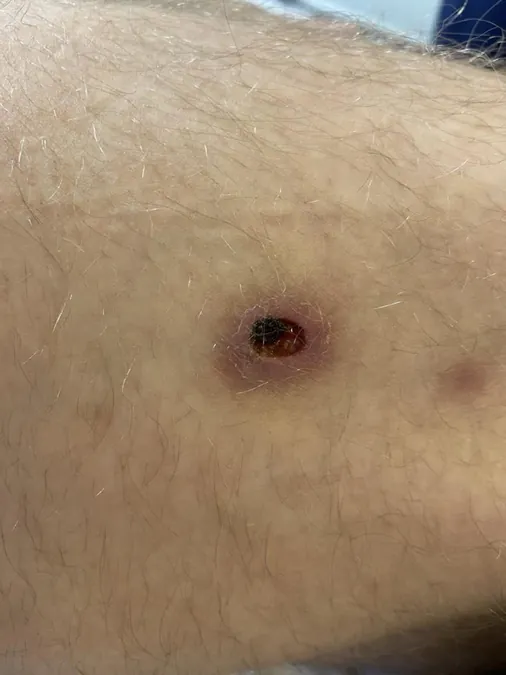
The Alarming Rise of Ocular Syphilis: A 29-Year-Old's Struggle and Its Implications
2025-03-26
Author: Yu
Introduction
In recent years, syphilis, a sexually transmitted infection (STI) caused by the bacterium Treponema pallidum, has experienced a concerning resurgence. The incidence of this disease has surged dramatically over the past two decades, and a notable increase has been observed in ophthalmology settings as more cases of ocular syphilis emerge.
Case Presentation
A case that highlights the severity and complexities of this condition involved a 29-year-old male who sought medical help due to blurred vision in his left eye. Initially, he exhibited no systemic symptoms or prior ocular issues. Upon examination, it was revealed that his best-corrected visual acuity (BCVA) was perfect in the right eye (20/20) but significantly impaired in the left (20/80). Alarmingly, his left eye had a high intraocular pressure (IOP) of 31 mmHg and signs of anterior uveitis, including a linear branching corneal erosion.
Although the initial diagnostic impression was a herpetic infection, treatment with antiviral medication led only to temporary improvement. Approximately four weeks later, the patient presented with new symptoms—roseolae and lumps on the left iris, paralleling a rash on his lower limbs. Subsequent testing for syphilis and HIV returned positive results. This dual diagnosis complicates matters, as ocular syphilis is frequently found alongside other STIs, including HIV, which was confirmed in this patient.
Treatment and Outcome
During his hospital stay, the patient received a rigorous treatment regimen that included intravenous penicillin alongside antiretroviral drugs. Remarkably, after completing 21 days of therapy, his condition improved significantly, with his BCVA restored to 20/20 at the six-month follow-up.
Public Health Implications
This case underscores the critical need for healthcare professionals to conduct comprehensive tests for STIs, particularly Treponema pallidum, when patients present with atypical or treatment-resistant ocular symptoms. The staggering rise in syphilis rates in Europe—from a peak of 7.0 cases per 100,000 people in 2021—reinforces this warning. In Poland, syphilis rates have also seen fluctuating trends, particularly amid the COVID-19 pandemic, where limited healthcare access likely contributed to decreased reporting.
Evidently, the increasing incidence of syphilis is linked to high-risk sexual behaviors, particularly among men who have sex with men (MSM), where prevalence rates soared to 7.5% globally between 2000 and 2020. This worrying trend indicates a dire need for enhanced public health strategies, including education, testing, and increased access to treatment.
Ocular Symptoms and Diagnosis
The manifestations of ocular syphilis can vary widely but commonly include panuveitis and anterior uveitis. Given that ocular syphilis can obscure underlying HIV co-infections, timely diagnosis and treatment are paramount. Comprehensive serological testing, including both non-treponemal and treponemal tests, can facilitate accurate diagnosis and monitoring of treatment efficacy.
Treatment Guidelines
The treatment for ocular syphilis remains consistent with managing neurosyphilis, emphasizing the need for high-dose intravenous benzylpenicillin therapy. In cases involving HIV-infected patients, close monitoring and individualized approaches are essential, recognizing the heightened risk for complications, including central nervous system involvement.
Conclusion
This case serves as a critical reminder of the growing public health challenge posed by syphilis and the need for continued vigilance in diagnosing and treating this age-old yet re-emerging infection. As syphilis continues to spread, public health initiatives must evolve to combat this and other STIs effectively.




 Brasil (PT)
Brasil (PT)
 Canada (EN)
Canada (EN)
 Chile (ES)
Chile (ES)
 Česko (CS)
Česko (CS)
 대한민국 (KO)
대한민국 (KO)
 España (ES)
España (ES)
 France (FR)
France (FR)
 Hong Kong (EN)
Hong Kong (EN)
 Italia (IT)
Italia (IT)
 日本 (JA)
日本 (JA)
 Magyarország (HU)
Magyarország (HU)
 Norge (NO)
Norge (NO)
 Polska (PL)
Polska (PL)
 Schweiz (DE)
Schweiz (DE)
 Singapore (EN)
Singapore (EN)
 Sverige (SV)
Sverige (SV)
 Suomi (FI)
Suomi (FI)
 Türkiye (TR)
Türkiye (TR)
 الإمارات العربية المتحدة (AR)
الإمارات العربية المتحدة (AR)